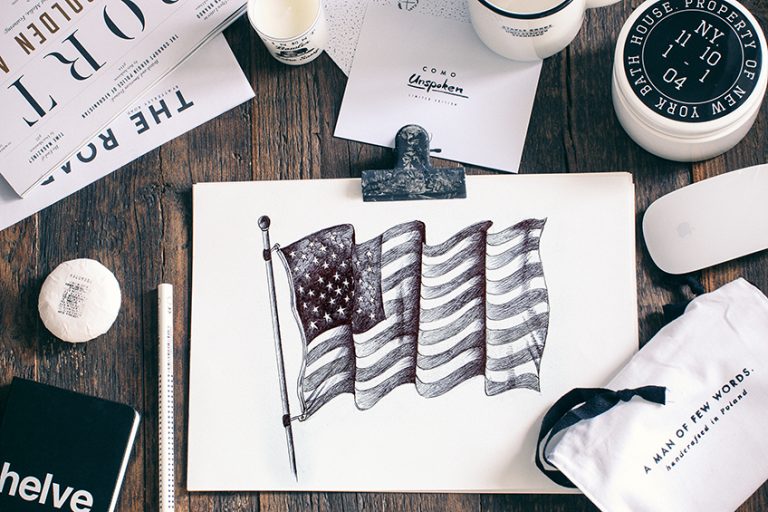How to Draw a Turkey – Our Fun and Easy Turkey Drawing Tutorial
A symbol of peace celebration in America, turkeys have a wonderful array of colors and patterns that also make them very exciting to draw. If you have ever wanted to know how to draw a turkey, but you simply do not know where to start, then look no further than our in-depth turkey drawing tutorial! This tutorial is designed for artists of any age and level, and it makes learning how to draw a turkey step-by-step super simple. Without further ado, let us get our gobble on and get into our turkey sketch tutorial.
Our Easy Turkey Drawing Guide
When it comes to figuring out how to draw a turkey, it is best to break the process down into manageable steps. We begin our turkey drawing tutorial by using a range of construction shapes and lines. Using construction lines helps us to map out the general shape of the drawing of a turkey before we begin adding details and colors. Often if we simply jump right in, it can be difficult to get the correct proportions and we may end up erasing a lot of our detail work just to start again.
The image below shows you all the steps of our turkey sketch tutorial so that you know what to expect.

In terms of mediums that you can use to create your drawing of a turkey, the choice is endless. When it comes to the coloring steps, you can easily adapt the instructions to suit your choice of paint, pencil, or graphic tablet.
So, without further ado, let us jump right into our turkey drawing.
Step 1: Outlining the Turkey’s Main Body
As you can see in the outline above, turkeys have a quite round shape. As such, we are going to begin by using quite a squat angled oval to lay down the general shape of the turkey’s body. This oval should be slightly angled with the left side more raised than the right.
Make sure that your oval is at the very center of your canvas, leaving a good deal of space on all sides for the rest of the turkey’s body.
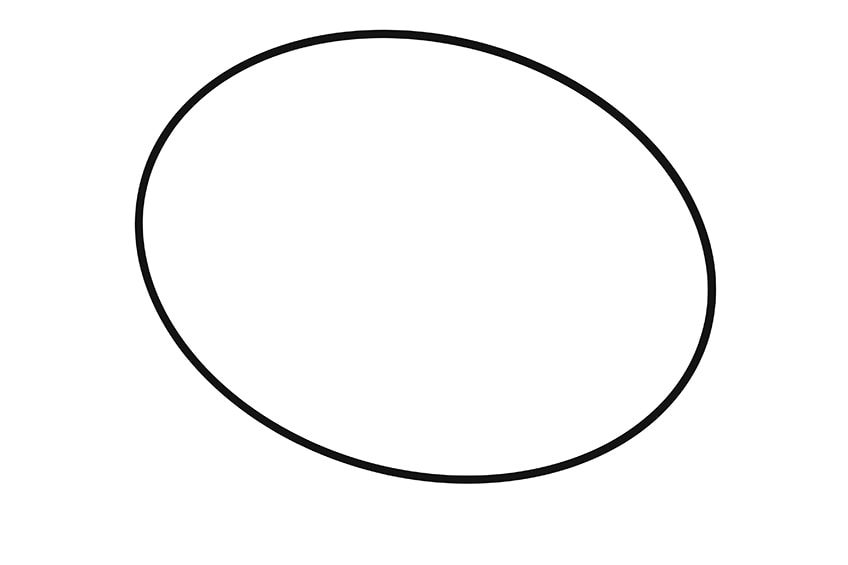
Step 2: Drawing the Head of Your Turkey
Compared to their bodies, the heads of turkeys are significantly smaller. As such, we need to make sure that we capture this difference in our drawing of a turkey. Just above the right side of the main body oval shape, draw a much smaller oval that is more sharply angled down towards the bottom right corner of your canvas.
Remember to leave a little space between the head and body ovals to accommodate the neck.

Step 3: Drawing the Neck to Join the Head and Body
In this step, we are going to draw the back curve of the neck and the droopy flesh on the front of the turkey’s throat. Begin on the very front end of the head oval, and draw a long curved shape that intersects slightly with the main body oval.
To finish this step, draw a curved swan-like line that joins the back of the head oval to the top of the main body oval.

Step 4: Crafting the Tail of Your Turkey
For this step, you are going to use a single line to create the outline of the turkey’s fanned tail. Begin this line on the top of the main body oval and curve it up, back, and around the back of this oval.
As you get to the bottom side of the main body oval, turn this line abruptly by 90 degrees and take it into the main body oval.

Step 5: Crafting the Wing Shape
The two wings of our turkey drawing hang down toward the ground slightly angled to the back of the body. Begin with the wing that is on the side of the body closest to us. Begin towards the front of the main body oval, carving a straight line down and back out of the oval. Then curve this line up and take it around and back up into the main body oval with a slight bump just below the tail structure.
For the second wing, you will only be drawing the bottom of the wing poking out in front of the other wing and below the body.

Step 6: Outlining the Legs and Feet
The two legs pole out between the two wings below the turkey’s main body oval. Begin with the leg closest to us, which is going to be the fullest leg. It begins at the point of intersection between the main body oval and the largest wing. Take this line forward, and finish it with three separate lines to create the feet.
For the second foot, simply create the foot with three lines poking out from the bottom of the largest wing.

Step 7: Drawing the Final Outline of Your Turkey Sketch
After all the slightly more tedious work of construction lines and shapes, it is finally time to put it to good use to help you create the final outline of your drawing of a turkey. In this step, we are going to follow the outline of the shape, add some feathering details, and add a few details to the face of your turkey sketch.
Begin at the head, following the outline of the construction lines onto the back of the main body oval. After a small distance, begin to create a more fluffy round shape that continues into the tail shape. When you get to the tail, begin to use curved shapes to create an outline of fanned feathers, getting larger as you extend down.
Create the same feather shapes on the bottoms of the wings, and continue to use slightly scribbly lines to follow the body outline.
When you get to the legs and feet, use the construction lines as the center point. Continue up the turkey’s chest, and create a fluffy bulge just below the beak. To finish this step, create an eye shape and a curve around this shape.
When you are happy with your outline, you can erase any remaining construction lines.

Step 8: Adding Texture and Details
Turkeys have an incredible number of feathers with different patterns and textures. This step may appear intimidating, but you can take it step-by-step and line-by-line. Begin at the head, using small dots and half circles to create a speckled texture throughout the head and neck.
When you get to the base of the neck, start using many small lines close together to create a curving pattern that follows the shape of the body. You can repeat this step a few times to create different patches of feathers, including the bulge on the front of the chest.
As you move down the turkey’s body, these lines should become larger and longer, and a little more separated, all the while following the curve of the body.
For the tail and wings, begin using straight lines around the patterns to create the effect of standing feathers. For the wings draw freehand patterns that somewhat align together like puzzle pieces, small texture details can be added on the wing such as short and long lines combined, as on the obstructed wing. Complete the step by drawing the wavy flowing feather lines of the chest towards the front of the body.
For the legs and feet, use very short lines to create a scaly texture.

Step 9: Adding Color to the Turkey’s Head
For this first coloring step, you are going to choose a slightly pink shade of red. Amaranth red is ideal, but any available shade that is similar will do great.
Use a regular brush to fill the entire head and neck of your turkey with this shade.
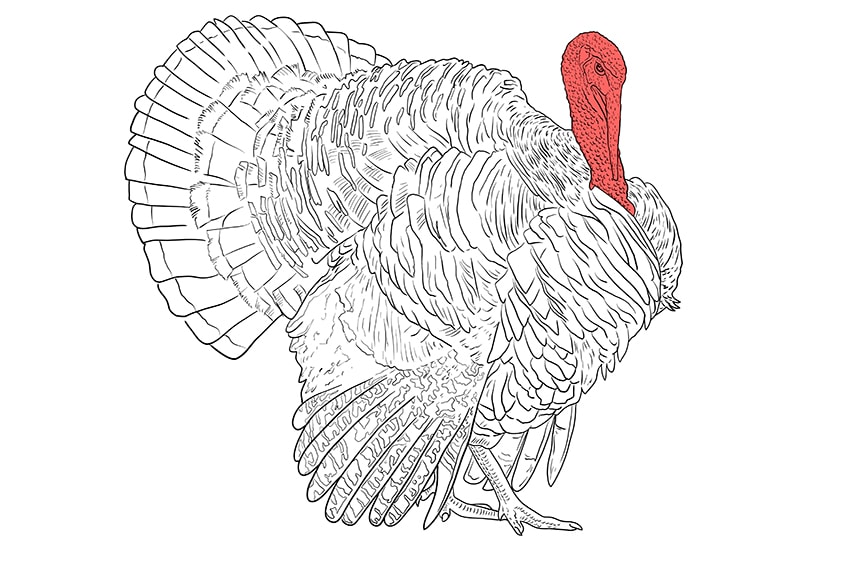
Step 10: Forming the Base Color of the Feather Coat
In this step, we are going to start adding color to the feathers of our turkey sketch. We are going to start with the feathers of the main body.
Using dark gray or light brown paint, fill this first body of feathers with an even coat of color.

Step 11: Adding a Highlight Color to These Feathers
We are now going to use a lighter brown shade to add some highlight speckles to the feathers at the top and back of this block of feathers.
Use a fine brush and some tan or beige paint to fill in some of the texture shapes we drew earlier.
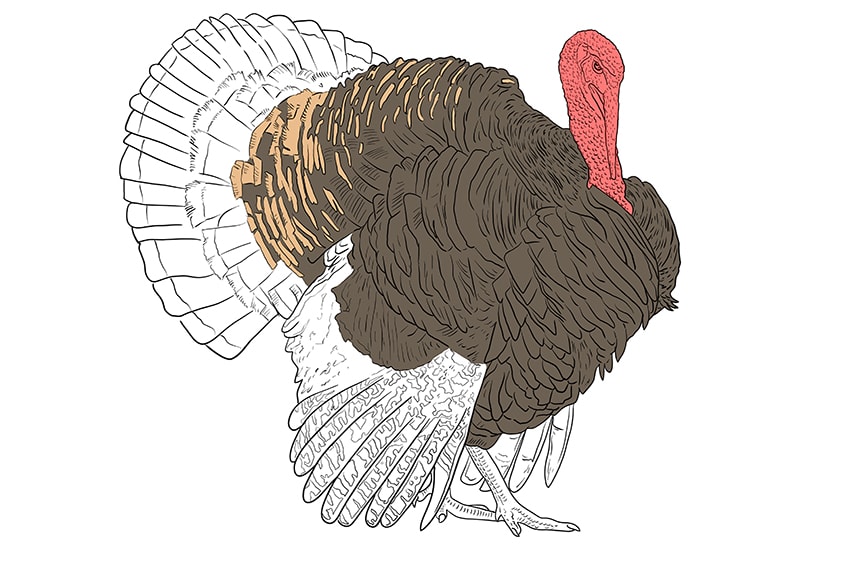
Step 12: Applying Color to the Legs and Feet
This step is quick and easy. Simply color the feet of your turkey with light brown paint and a fine brush.

Step 13: Filling the Turkey’s Wings with Color
Although the final appearance of the turkey’s wings is speckled, we are only going to lay the base color in this step.
Find a lovely rich coffee brown shade and use this to fill the entirety of the wing shapes.
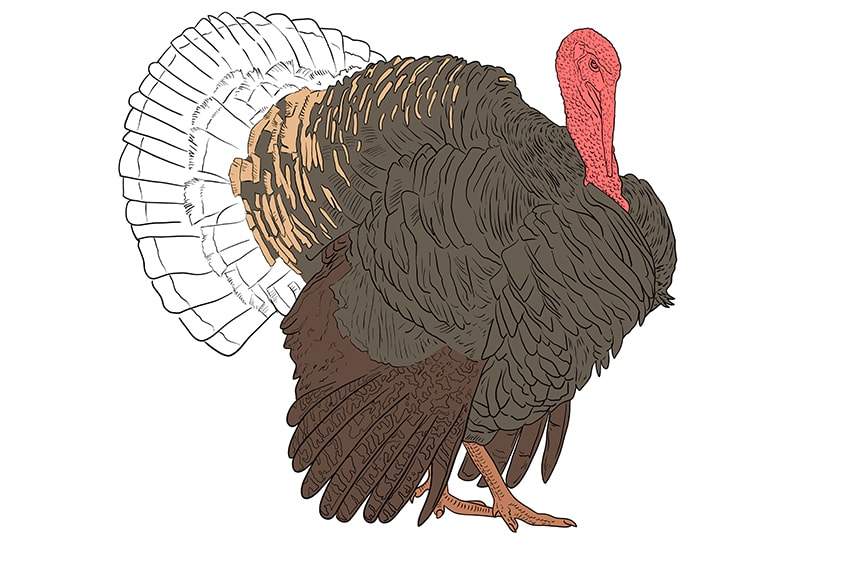
Step 14: Applying the Base Color to the Tail
We are now adding the final base layer of color to the tail of the turkey, completing the base coat for our whole turkey drawing.
Use a bright and warmer brown shade and fill in the remaining blank feathers.

Step 15: Using Color to Create Details and Dimension
In this step, you are going to use a range of different shadow and highlight colors to add additional details and shape to your drawing of a turkey. Begin by using a touch of black paint to create lines of distinction between the different layers of feathers throughout the turkey’s body. Add a little shading to the chest and side wing feathers too.
Next, use a darker red or orange shade to add shading to the underside of the neck and beak, and complete the dimension step by using a touch of white to the top of the head, inside, and around the eye.
While focussing on the head, use a purple or blue shade to color in the area of the face around the eye, for that distinctive turkey coloring. Finally, to finish this step, use a touch of orange to color the very top of the turkey’s beak.

Step 16: Adding Details to the Feathers
Using a small soft brush with white paint, paint around the patterns of the wings leaving an inverted brown pattern visible.
For the rear feather textures use a small soft brush with yellow or gold paint to gently add a color blend to the tan highlights.

Step 17: Creating Color Details on the Tail
It is now time to add some additional details to the patterns of the tail feathers using white and black paint. Begin with a sharp brush and some black paint and color the outer rim of the tail feathers and the inner lines of the tail. Next, with a small soft brush, use a little white paint to add highlight lines to each of the rear tail feathers.
Finally, color the feathery patches in the center of the tail with a little white.

Step 18: Finalizing Your Drawing of a Turkey
To finish your turkey sketch, we are going to polish up a few last details. Begin by using a fine brush to add a touch of black shading around the head and neck texture lines. Color the eye in black at the same time.
Finally, if you would like a more seamless look, you can erase the outline by tracing over it with the corresponding color at each point.

Now that you have completed all the hard work in your drawing of a turkey, it is time to stand back and admire your talent. Hopefully you are happy with your final turkey sketch, and will attempt to create many more beautiful and realistic turkey drawings.
Frequently Asked Questions
What Makes Turkey Drawing Different from Drawing Other Birds?
The most distinctive features of a turkey are the main difference in the drawing process between them and other birds. Their unique patterns and coloring, as well as their feather arrangements, make them a unique and exciting subject for all artists to explore.
Can this Tutorial Show Me How to Draw a Turkey Step-by-Step?
Absolutely! This tutorial has 19 easy-to-follow steps which take you through the process of drawing a turkey making it very easy for you to create a realistic turkey sketch.
Matthew Matthysen is an educated multidisciplinary artist and illustrator. He successfully completed his art degree at the University of Witwatersrand in South Africa, majoring in art history and contemporary drawing. The focus of his thesis was to explore the philosophical implications of the macro and micro-universe on the human experience. Matthew uses diverse media, such as written and hands-on components, to explore various approaches that are on the border between philosophy and science.
Matthew organized various exhibitions before and during his years as a student and is still passionate about doing so today. He currently works as a freelance artist and writer in various fields. He also has a permanent position at a renowned online gallery (ArtGazette) where he produces various works on commission. As a freelance artist, he creates several series and successfully sells them to galleries and collectors. He loves to use his work and skills in various fields of interest.
Matthew has been creating drawing and painting tutorials since the relaunch in 2020. Through his involvement with artincontext.org, he has been able to deepen his knowledge of various painting mediums. For example, watercolor techniques, calligraphy and lately digital drawing, which is becoming more and more popular.
Learn more about Matthew Matthysen and the Art in Context Team.








